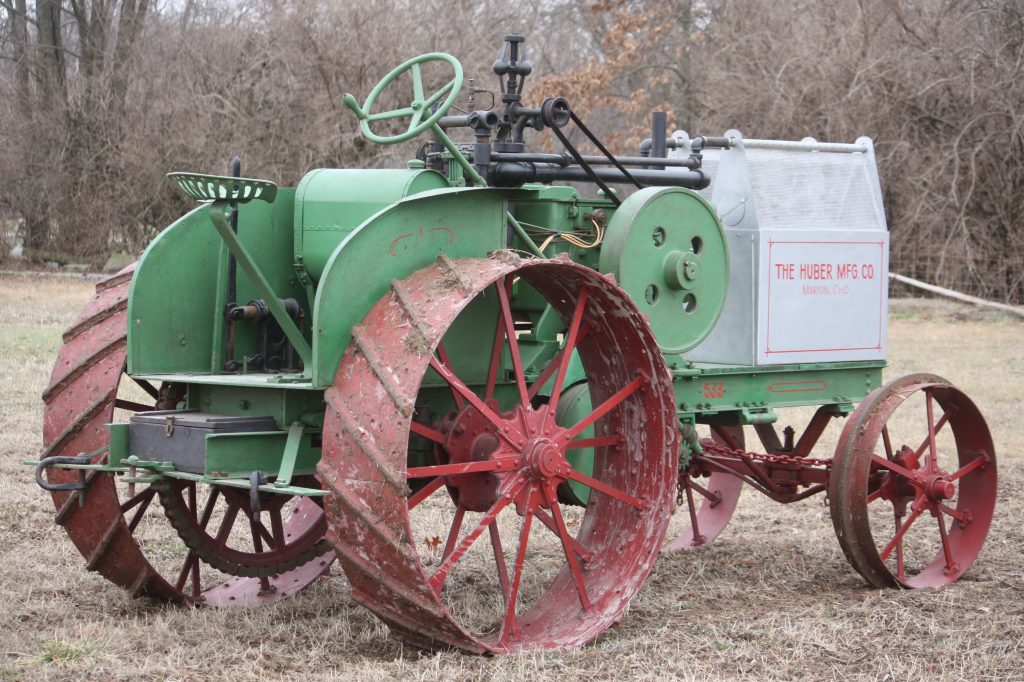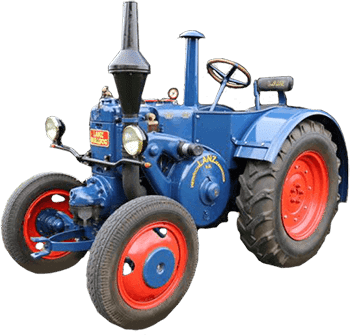March 5, 2021
The Huber Farmers’ Tractor
By Patrick W. Ertel
Originally published in the 1995 Nov/Dec issue of Antique Power Magazine.
Huber was a man of vision. He saw how the steam engine might provide the power so desperately needed by farmers and he recognized the shortcomings of the engines then available. In 1875 he introduced the New Huber line of steam traction engines and for the next 40 years produced this popular and successful engine line.
Huber demonstrated his vision again in 1898 by buying the Van Duzen engine company of Cincinnati, Ohio, and entering the infant gas traction engine business. Van Duzen had built the engine Froelich used on his famous tractor in 1892 and had experimented with tractors on its own.
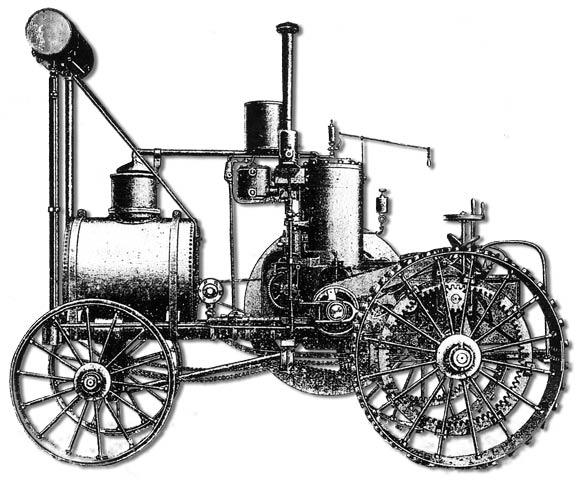
In 1898, Huber built 30 traction engines closely resembling the Van Duzen, using a single cylinder Van Duzen engine and parts from Huber steam traction engines. These machines were intended for belt work only and suffered from the backward state of gas engine technology. With hot tube ignition and a steam engine drivetrain, they were not a significant improvement over the steam engines of the day. After building only 30 machines, the company concentrated once again on its successful steam engine business.
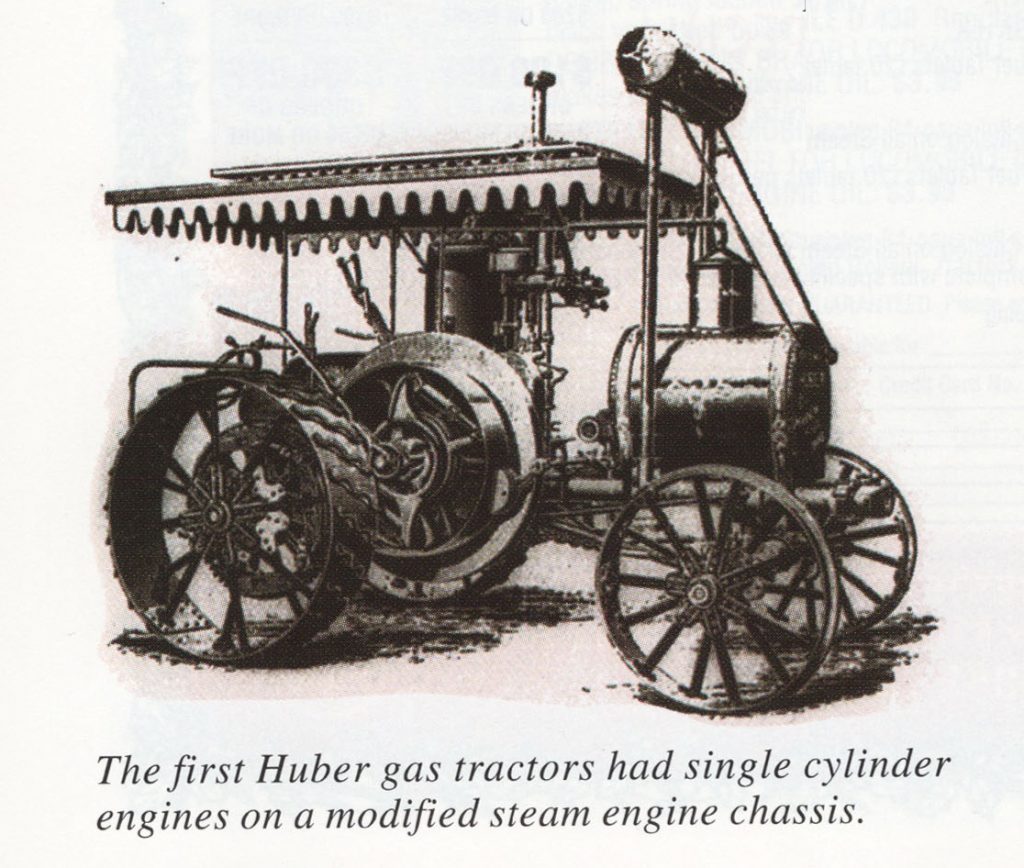
Company founder Edward Huber passed away in 1904, but he had infused the company with a pioneering spirit that lived on after his passing. In 1911 the Huber Company was in a good position to take advantage of the new advances in gas engine technology and the exploding interest in the new gas tractor. The company’s steam engine business was flourishing. A distribution system with branch houses throughout the East and Midwest and a busy export office had been established. All the company needed and to dominate the industry was a superior tractor.
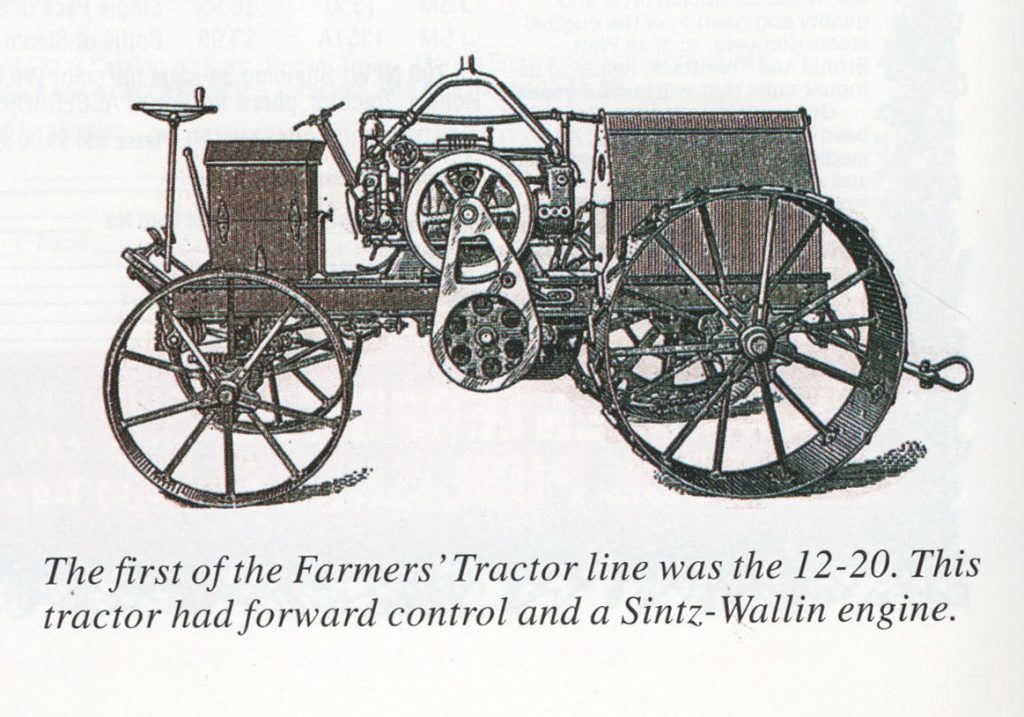
In 1911, Huber jumped back into the tractor business with a model line it called the “Farmers’ Tractor.” The new tractor, rated at 12 drawbar horsepower and 20 belt horsepower, featured a horizontally opposed 5-¾” by 6” two-cylinder engine built by Sintz-Wallin of Grand Rapids, Michigan. Unlike the first Huber tractors, the new Huber was not just a modified steam engine. The engine was mounted crosswise in the chassis, with chain drive from the engine to a clutch mounted on the transmission had two speeds forward and one reverse, and a chain transmitted power directly to the rear wheels. The engine was equipped to burn either kerosene or gasoline and had jump spark ignition. The operator sat at the front of these tractors, with the steering wheel, foot clutch, and brake in front of him and the other controls behind. These tractors may have gone into production as early as 1910. Six were sold in early 1911 and six more sold over the next year. One was dismantled for parts before being sold.
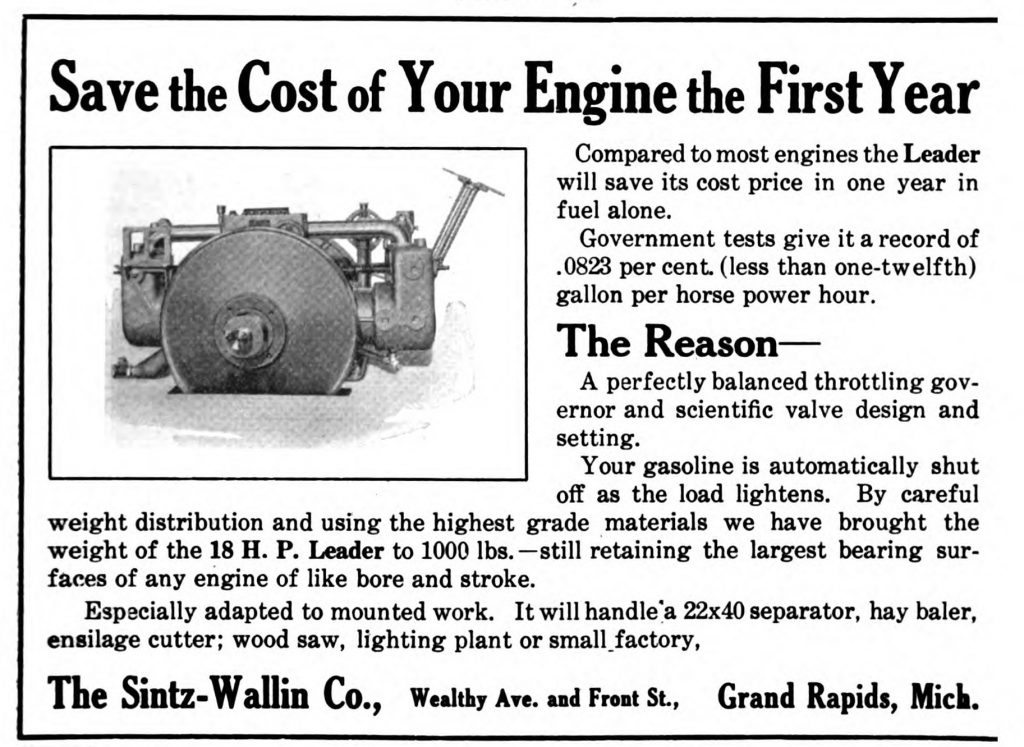
In 1911 Huber built a larger tractor that it rated at 17-19 horsepower tractor. Forty-three of these were built, and their fate is indicative of the infant state of the tractor industry in 1911. One was sold without an engine, while 15 were dismantled for parts, presumably needed to keep the remaining tractors running.
Four tractors were scrapped and one was fitted with a larger 7” by 8” engine, two years after it was sold. Two experimental 17-19s were fitted with what the factory records simply show as “front drive.” This may refer to either the location of the operator or the drive wheels. No further reference, photos, or drawings of the tractor have been found to help illuminate the point.
While Huber struggled with the problem-prone 17-19, the company introduced a new model, the 13-22. The chassis had been reconfigured into a more conventional form. The steering and drive axles had switched ends, and the driver’s seat and steering had been turned so that the driver looked forward over the engine.

While it is strictly conjecture, the configuration of this tractor suggests that the experimental 17-19s may have had front wheel drive and rear wheel steering. It would have been relatively easy to turn the operator of the 12-20 around without changing the rest of the tractor. Given the state of tractor design in 1912, it is not unrealistic to expect a manufacturer to experiment with such an idea. Perhaps the engineers switched the axles after this arrangement proved to be unsatisfactory.
The 13-22 used a two-speed transmission similar to that on the 12-20, but was powered by a 7” by 7” two-cylinder Sintz-Wallin engine. No more than 12 of these 13-22s were built. Four of them were scrapped before being sold. The problem with this tractor was apparently the 7 inch by 7 inch engine, four were rebuilt with a larger engine and were apparently satisfactory.
Huber’s Farmers’ Tractor line finally found its stride in 1912 with the introduction of the 15-30. This model was very similar to the 13-22, but used a 7” by 8” two-cylinder Sintz-Wallin engine. The engine was finally powerful enough and the drivetrain strong enough for the Huber to advertise a truly dependable, (for its day), four plow tractor. Four 15-30s were built with orchard equipment, consisting of galvanized steel screen extending from in the front of the radiator to the driver’s area.
Unlike modern orchard tractors, where shielding is used to prevent the tractor from damaging the trees, the Huber orchard screen was intended to protect the tractor. The first 15-30s were sold in the fall of 1912 and the last was sold in July of 1916. About 150 were sold in all.
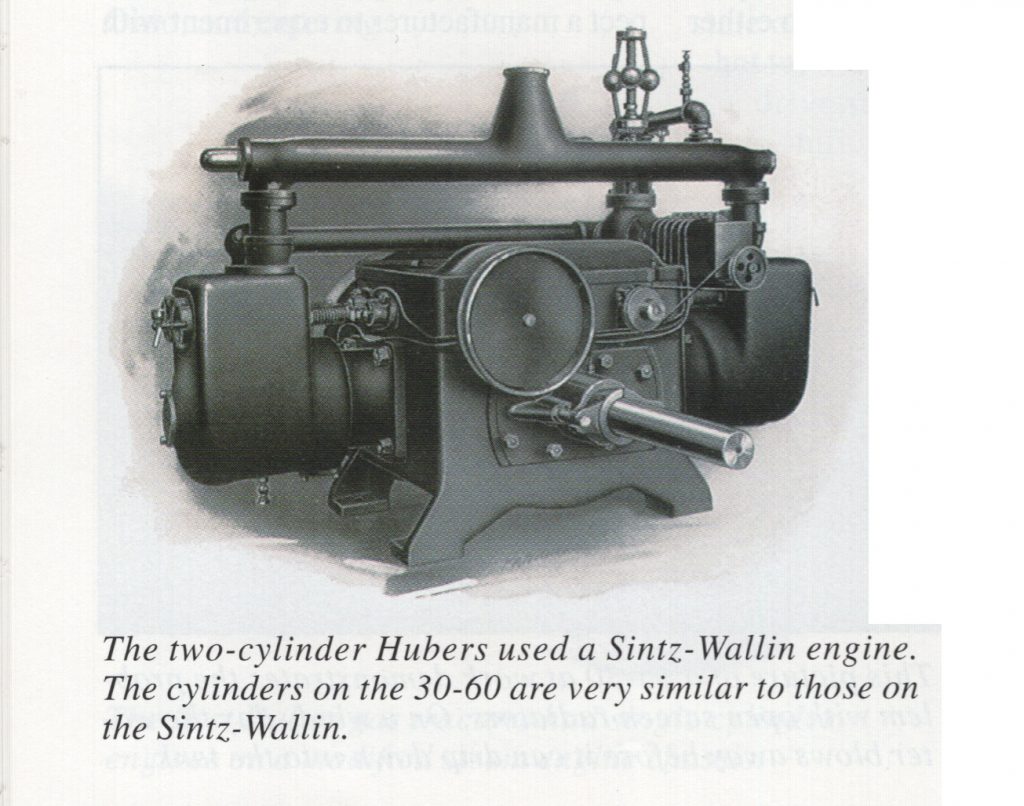
With the success of the 15-30, Huber felt confident that it could build a larger two-cylinder tractor. In 1914 the company introduced the 20-40. This tractor was a scaled up 15-30 with a larger 8” by 9” engine and a stubel type radiator. The 20-40 sold for $1,800 f.o.b. the factory. Huber built 76 of the 20-40 tractors between 1914 and 1916.
While its early work was with two-cylinder tractors, Huber was always mindful of the market for more power. In 1911 two tractors with a 30-60 horsepower rating were sold. These had a 6 ¼” by 8” four-cylinder “Garver Type” engines.
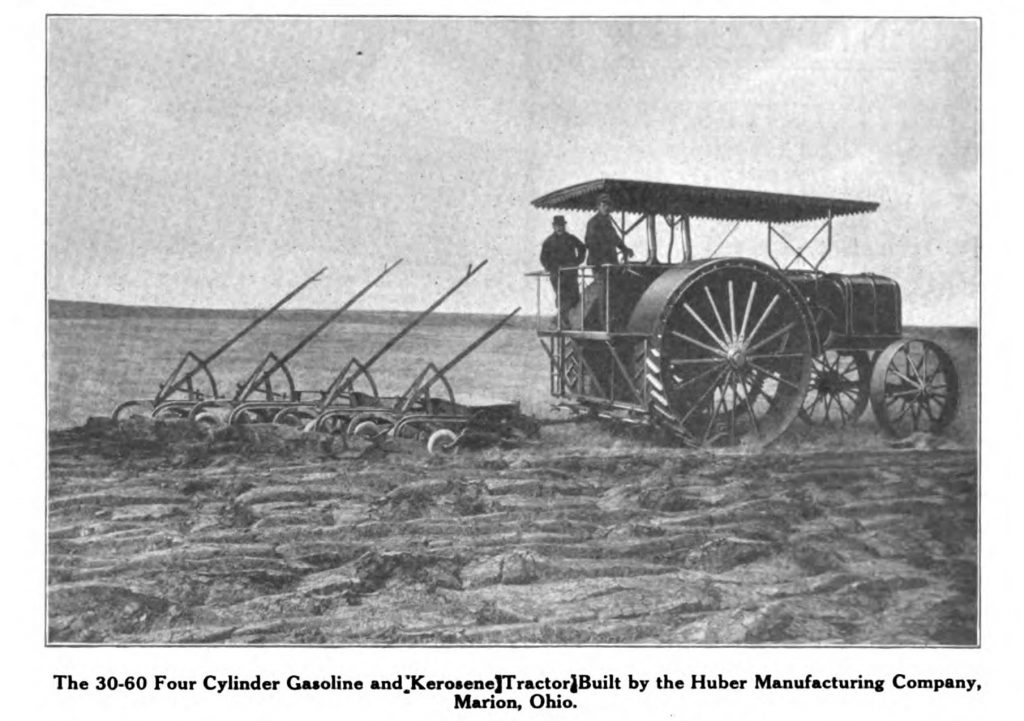
In early 1912, a group of 75 four-cylinder tractors rated at 30-60 horsepower were built. These tractors had four individual 7” by 8” cylinders similar to those on the Sintz-Wallin two-cylinder engines, though it is not known if Sintz-Wallin made the engines. The engine was mounted longitudinally in the frame. Some 30-60s have a single forward speed, while others were fitted with a two-speed transmission. Final drive to the wheels was by spur gear. Huber sold 153 of these 30-60s before June 1916 at a price of $3,000 each.
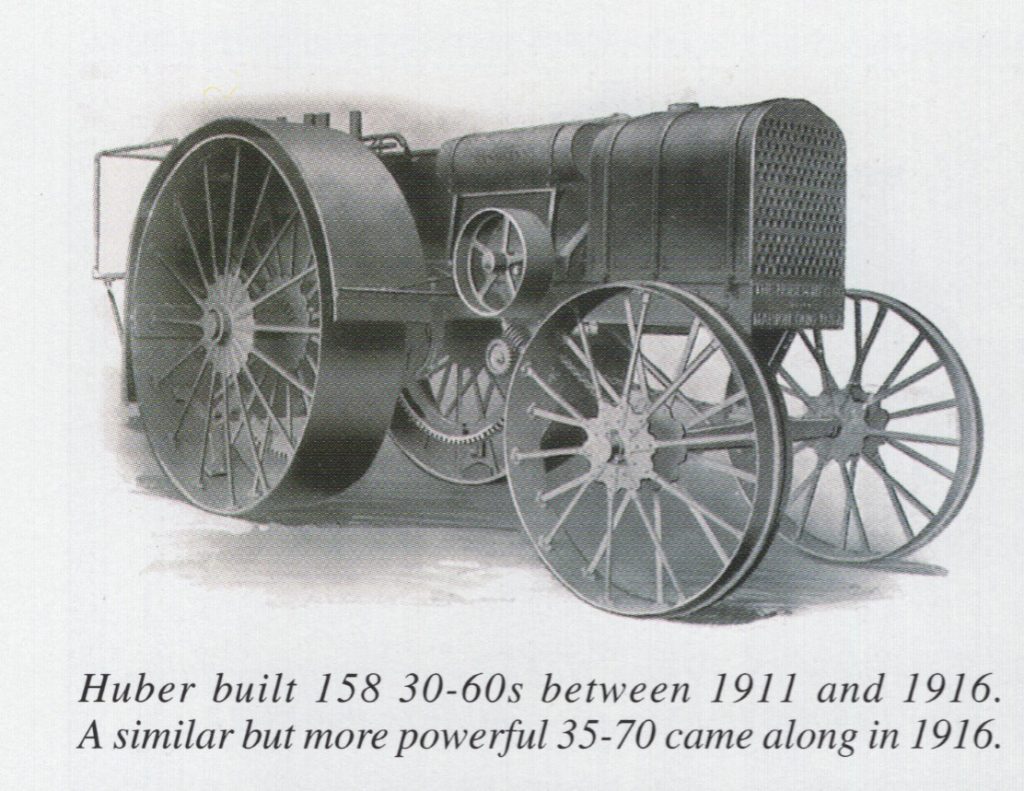
A big 35-70 was barely mentioned in company literature, but it went into production before the 30-60s were all sold. The 35-70 was similar to the 30-60but had a ¼ inch larger cylinder bore. Huber made 44 of these big tractors (45 if you count a 30-60 the factory rebuilt as a 35-70). The first one was sold in May 1916 and the last just a year later.
Huber marketed its gas tractors everywhere their steam engines were sold. The two-cylinder tractors were sold in every state east of the Rocky Mountains, central Canada, and one tractor was shipped to Havana, Cuba. With only a few exceptions, the four-cylinder tractors were sold in the states east of the Rockies and west of the Mississippi river.
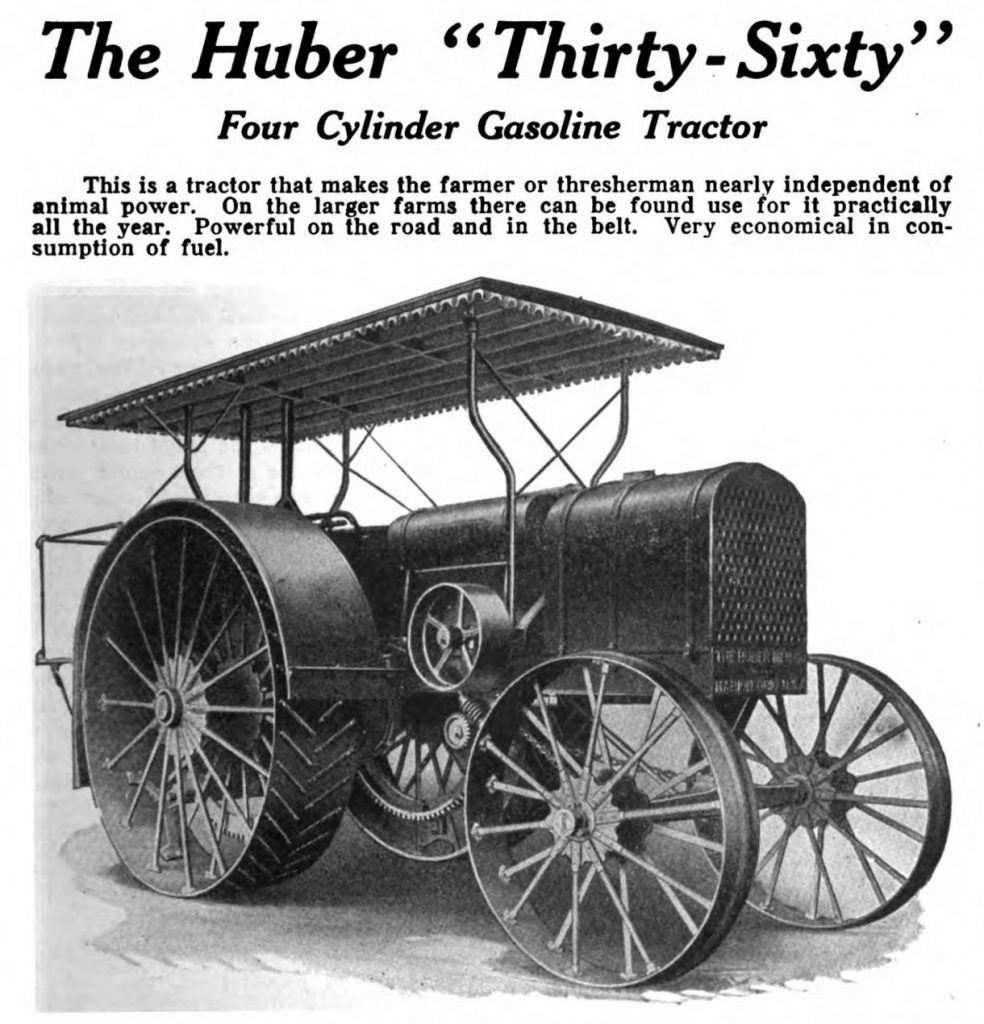
In modern terms, the Farmers’ Tractor line was not a success, since fewer than 500 tractors were built in five years. But Huber’s Farmers’ Tractors were built at a time of rapid change in tractor technology and Huber faced the challenges better than most companies. Changes and improvements were being made constantly. No two of these few remaining tractors are the same.
When the Farmers’ Tractors came on the market, the gas tractor was really a gas traction engine – a steam engine chassis with gas power. Just as manufacturers were coming to grips with the problems of building 10 and 20 ton gas-powered traction engines, a new development appeared on the horizon; the light tractors. The light tractor presented a totally different set of problems. A steam engine could not be scaled down from a 20,000 pound machine to a 5,000 poiung one. Engineers had to start with a clean slate.
Huber met this challenge in 1916 and in the process built one of its most successful tractors, the “Light Four.” When the Light Four went on the market in 1916, the Huber company backed it with five solid years of tractor experience. Huber sold 1600 Light Fours over the years. The success of the Light Four can be attributed to the successes and failures of Huber’s first real production tractors – the Farmers’ Tractors.
Dan Ehlerding’s 1916 Huber 15-30
Dan Ehlerding’s Huber 15-30 was sold to W. B. Petty of Hot Springs, South Dakota, on April 21, 1916. Dan bought it in 1991 from Mel Reints of Gilette, Wyoming. The tractor was in pieces and some of the pieces were missing.
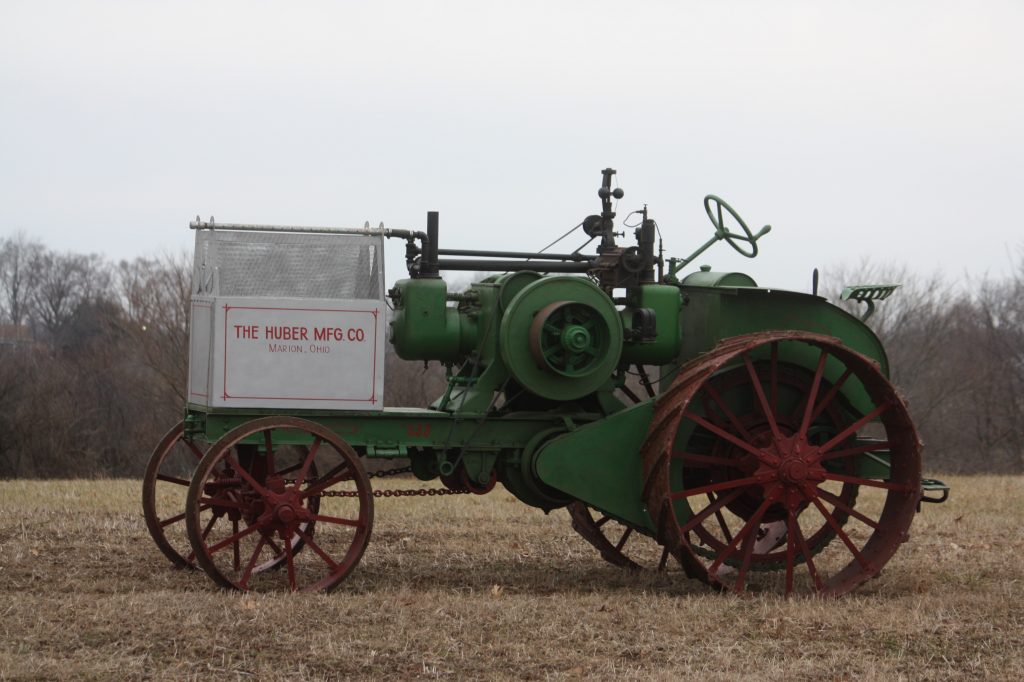
The worst part of the tractor was the engine, which was missing pistons, rods, valves, guides, cam gear, intake and exhaust manifolds, and many other parts. The radiator was badly beaten up.
Dan started the restoration in 1991. “I worked on it a little at a time until 1995,” said Dan. “The Marion County club was featuring Huber at their show that June and they wanted an old Huber to be there. I got busy in the winter of ‘95 and got it in one piece for the show.”
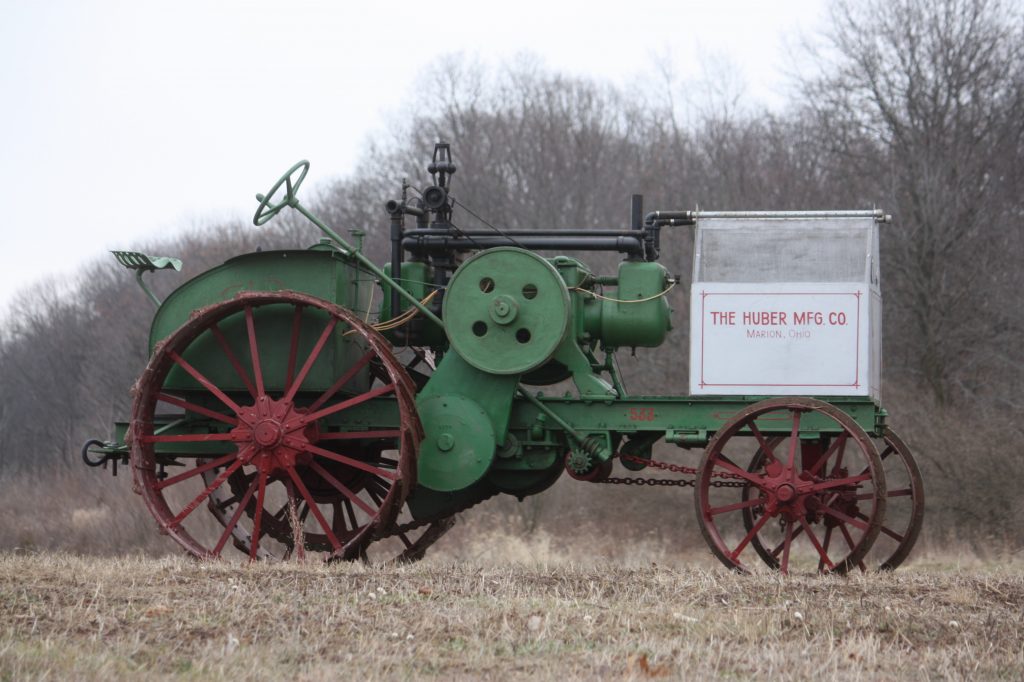
Dan went to Canandaigua, New York, to look at Jim Erdle’s similar tractor. “I measured the rods and bearings to find out what their dimensions ought to be. I had some 30-60 Aultman-Taylor rods that were similar, so I shortened them to match the Huber rods. I used Aultman-Taylor pistons, too. I also found suitable rod bearings in a Bessemer oil field engine.”
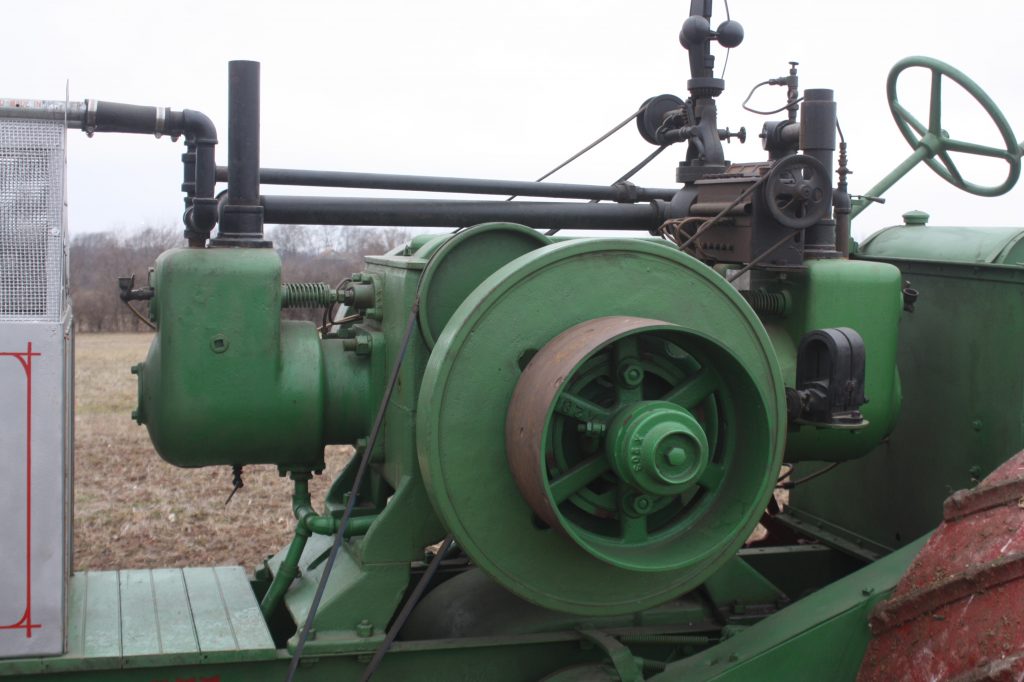
“The cam gear turned out to be a standard item that I bought off the shelf from a gear company. I fabricated the missing manifolds. Various parts came from here and there. There were lots of small parts…oiler brackets and water jackets and so on…that I had to make.”

Dan got the tractor painted and assembled in time for the Huber show in June. “I didn’t have it running yet, but it was in one piece. It wouldn’t run because the cams weren’t timed right. There is a cam for each cylinder and getting them in right was a matter of educated guessing and trial and error.”
The tractor has been run a few times, but there are still problems to iron out. It is now at Dan’s farm in Ohio, where it will remain until he gets it running to his satisfaction. After that? “It may end up in the Huber museum where more people can see it,” says Dan.
Want to read more articles like this? Be sure to check out Antique Power Magazine at https://www.antiquepower.com/
